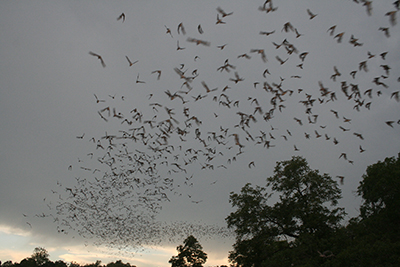Eliminating Rabies Across the World
World Rabies Day is September 28, 2012. It is a day to raise awareness about the impact of human and animal rabies. More than 55,000 people die from rabies worldwide every year, a rate of one person every 10 minutes. This is an astonishing number, especially because rabies in humans in 100 per cent preventable. Most of these cases are transmitted to humans by dogs.

World Rabies Day events have been held in 150 countries, and have vaccinated 7.7 million dogs to date. World Rabies Day was created in 2006 by the Global Alliance for Rabies Control. The Alliance consisted of researchers and professionals involved with human and animal healthcare, including Dr. Leon Russell, professor in the Texas A&M College of Veterinary Medicine & Biomedical Sciences (CVM).
Russell explained that the goal of World Rabies Day is to reduce the amount of rabies cases throughout the world by ensuring adequate animal vaccination and control, educating people who may be at risk, and increasing access to appropriate medical care for those bitten by rabies infected animals. For more information about getting animals vaccinated on World Rabies Day in your area, please contact your local veterinarian.
While there are various strains of rabies, dogs are the primary source for transmission to humans across the globe. However, canine rabies virus strain has been eradicated in the United States because of proper and complete vaccination procedures.
“Our hope is to eliminate canine rabies across the globe,” Russell said. “Rabies is completely preventable. We want people to understand the importance of vaccinating against the disease. But while canine rabies has been eliminated, there are still treats to humans and pets in the United States, so people, particularly pet owners need to take precautions.”
Dogs and cats contract rabies primarily from skunks, raccoons, and bats in the United States. These canine and feline pets serve as “bridge animals” or carriers of rabies between wildlife hosts and people. Russell explained that if you suspect your dog or cat has been exposed to a rabid animal, you should take your pet to a veterinarian immediately.
While Russell says that it is good to be aware of potentially rabid bats, skunks, and raccoons, nothing is as effective in preventing rabies as vaccination of your canine and feline pets.
“There are two types of vaccines. One protects pets for one year, the other for three years,” Russell said. “They are both great vaccines, and sometimes local ordinances or price dictates which one pet owners choose – but regardless, pets should always be routinely vaccinated against rabies.”
In addition to dogs and cats, Russell recommends vaccinating cattle and equines as well. While dogs and cats predominantly contract rabies from various wildlife species (skunks, raccoons, bats), horses and cattle most often contract rabies from skunks.
“Horses that are stalled, particularly at night, should be vaccinated,” Russell said. “We’ve seen cases of horses that contract rabies from a skunk that gets into the stall; it isn’t common, but it does happen. It’s better to be safe than sorry when it comes to rabies. Vaccinating your animals is the best prevention.”
Pet Talk is a service of the College of Veterinary Medicine & Biomedical Sciences, Texas A&M University. Stories can be viewed on the Web at vetmed.tamu.edu/news/pet-talk. Suggestions for future topics may be directed to editor@cvm.tamu.edu.


